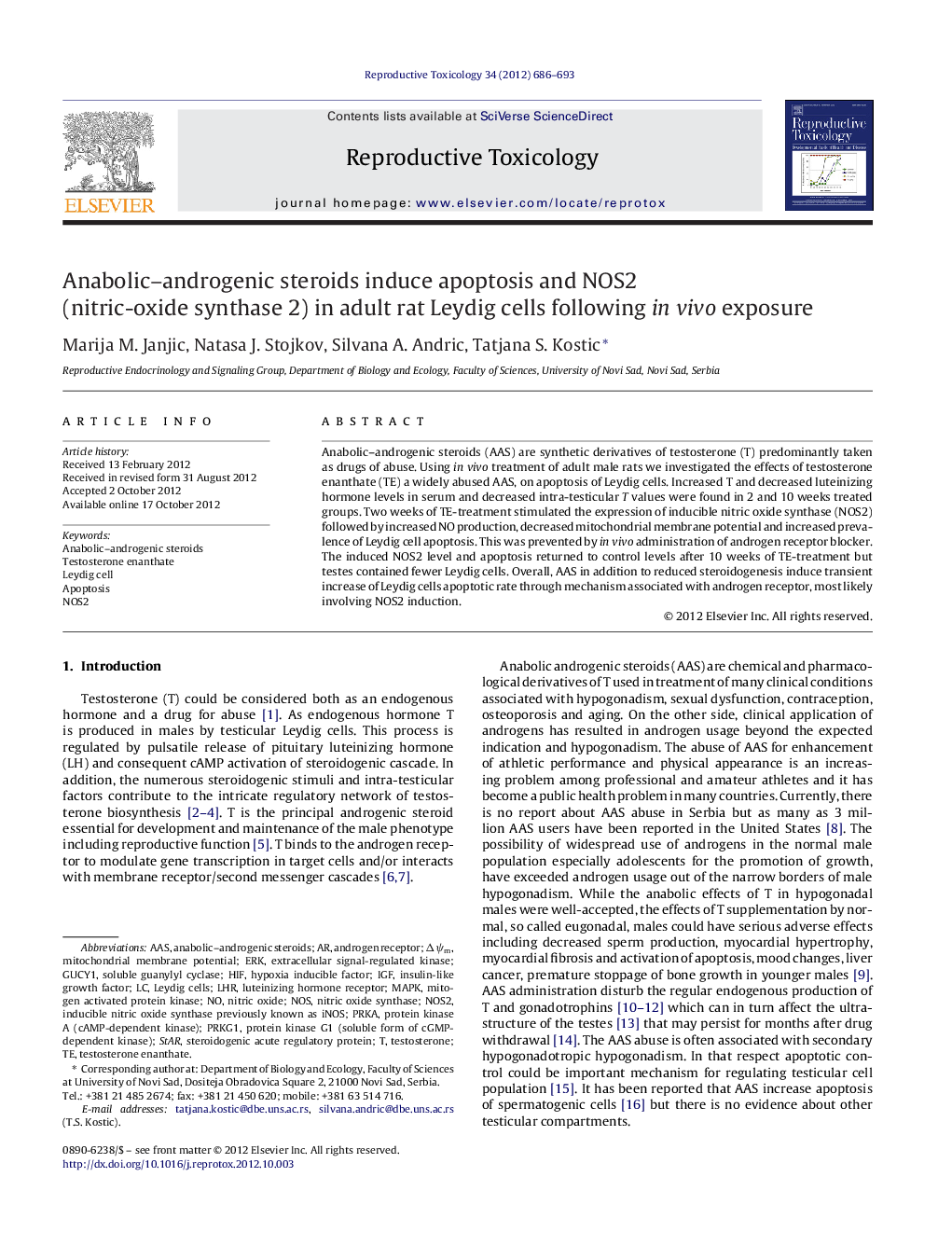| کد مقاله | کد نشریه | سال انتشار | مقاله انگلیسی | نسخه تمام متن |
|---|---|---|---|---|
| 2593885 | 1132252 | 2012 | 8 صفحه PDF | دانلود رایگان |

Anabolic–androgenic steroids (AAS) are synthetic derivatives of testosterone (T) predominantly taken as drugs of abuse. Using in vivo treatment of adult male rats we investigated the effects of testosterone enanthate (TE) a widely abused AAS, on apoptosis of Leydig cells. Increased T and decreased luteinizing hormone levels in serum and decreased intra-testicular T values were found in 2 and 10 weeks treated groups. Two weeks of TE-treatment stimulated the expression of inducible nitric oxide synthase (NOS2) followed by increased NO production, decreased mitochondrial membrane potential and increased prevalence of Leydig cell apoptosis. This was prevented by in vivo administration of androgen receptor blocker. The induced NOS2 level and apoptosis returned to control levels after 10 weeks of TE-treatment but testes contained fewer Leydig cells. Overall, AAS in addition to reduced steroidogenesis induce transient increase of Leydig cells apoptotic rate through mechanism associated with androgen receptor, most likely involving NOS2 induction.
Different effects of 2 and 10 weeks in vivo testosterone enanthate (TE) treatment on NO signaling and apoptosis in Leydig cell of adult rat. Two and ten weeks of TE-treatment demonstrated the same effect on T homeostasis (decreased circulating LH, cAMP and steroidogenesis), but different effect on NO signaling and Δψm and apoptotic rate in Leydig cell. Two weeks TE-treatment stimulated the expression of NOS2 followed by increased NO production, decreased Δψm and increased prevalence of Leydig cell apoptosis. This was accompanied by increase of Ar as well as decreased Hif1a transcription prevented by in vivo administration of androgen receptor blocker. The survival kinases PRKG1 and Erk1 were down regulated. The induced NOS2 level and apoptosis returned to control levels after 10 weeks of TE-treatment but testes contained fewer Leydig cells with decreased steroidogenic capacity. Thus, AAS in addition to reduced steroidogenesis induce transient increase of Leydig cells apoptotic rate through mechanism associated with androgen receptor, most likely involving NOS2 induction.Figure optionsDownload as PowerPoint slideHighlights
► In vivo application of anabolic–androgenic steroids (AAS) reduced Leydig cells steroidogenesis.
► In vivo application of AAS induced transient increase of Leydig cells apoptotic rate.
► The increase of Leydig cells apoptotic rate is associated with androgen receptor, most likely involving NOS2 induction.
Journal: Reproductive Toxicology - Volume 34, Issue 4, December 2012, Pages 686–693